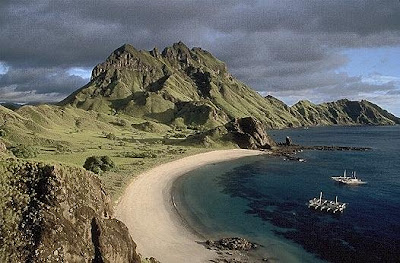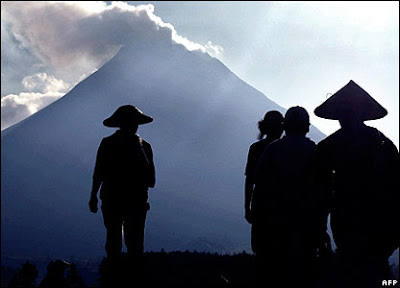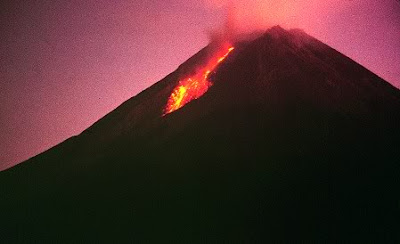
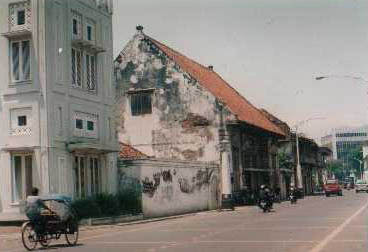
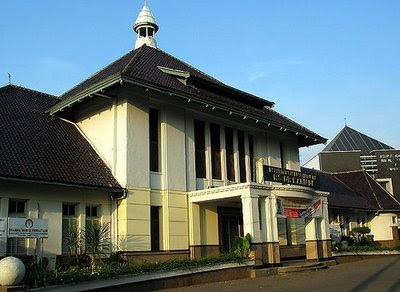
"One area is called the center of town if meet parsyaratan urban design and has a city-forming element," he said.According to him, the city-forming element is a unity that can not be separated from each other and have clear limits in an urban area.Elements that form the concept of the city center and then translated in the form of buildings including, the plaza, government buildings, markets, and places of worship.
As in the Old City area, he added, there are a number of historic buildings that used to serve as government buildings are now switching functions and even others just left without treatment and do not work anymore.
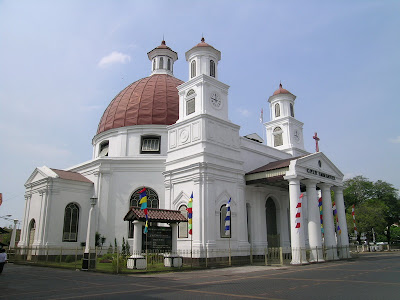
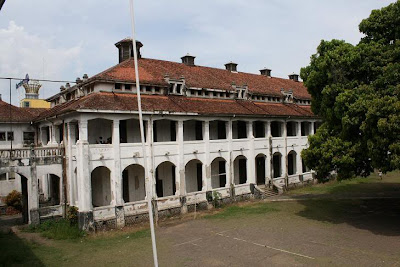 Lawang Sewu is a building in Semarang, Central Java, which is the office of the Nederlands-Indische Maatschappij Spoorweg or NIS. Built in 1904 and completed in 1907. Located at the roundabout Tugu Muda formerly called Wilhelmina Plein.
Lawang Sewu is a building in Semarang, Central Java, which is the office of the Nederlands-Indische Maatschappij Spoorweg or NIS. Built in 1904 and completed in 1907. Located at the roundabout Tugu Muda formerly called Wilhelmina Plein.Local communities called Lawang Sewu (Thousand Door). This is because the building has a lot of doors (in fact the door was not until a thousand, maybe also because the window of the building height and width, the public also regard it as the door).
Ancient buildings and magnificent two-story after independence is used as a Railway Division office of Indonesia (DKARI) or the current PT Kereta Api Indonesia. Also been used as an Infrastructure Agency Regional Military Command (Kodam IV / Diponegoro) and the Regional Office (Regional Office) Department of Transportation Central Java. During the struggle this building has its own historical record of events during a five-day battle in Semarang (14 October to 19 October 1945) in this old building into a great location of the battle between youth Youth AMKA or against Railway Kempetai and Kidobutai, Japan. Thus Semarang City Government Mayor and SK 650/50/1992, Lawang Sewu included as one of 102 ancient or historic buildings in the city of Semarang is worth being protected.
Currently building a 181-year-old was empty and the infamous haunted buildings and spooky. Occasionally used as a place of exhibition, including Semarang Expo.Pernah Tourism Expo and there is also a discourse that wants to turn it into a hotel. In the year 2007, this building was also used for the film with the same title with the building.

Talking about the city of Semarang from the standpoint of urban design, will certainly not independent of past history is visible from a number of Dutch heritage of historical buildings as one of the city-forming element.
Old Town area is actually a center of Semarang the original, which appeared many government buildings and several other supporters of the building as an element of the downtown area with the Dutch architectural style.
Most of the original city of Semarang complex from Semarang Port, Bridge Berok, Blenduk Church, and Tawang Station Complex. Began to be built since Semarang-Kaligawe submitted to the Netherlands on January 15, 1679 by Amangkurat II as payment for Dutch success Trunojoyo quell the rebellion.



Coastal beaches are still beautiful, although there was trash strewn leaves because rarely cleaned. Underwater scenery is very beautiful, and tourists can do as much snorkeling as the waves are not too big. Ketengah towering coral reefs causing large waves breaking in the middle. There are also hotels with prices that vary, from expensive to economically valuable hotel.

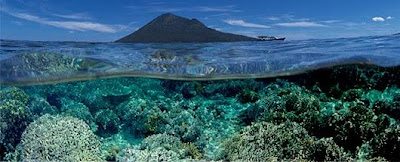
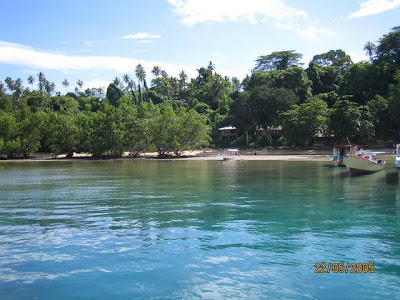
This island is part of the city of Manado, the provincial capital of North Sulawesi, Indonesia. Around Bunaken Bunaken marine park there which is part of the Marine National Park of Manado Tua. This marine park has one of the marine biodiversity of the highest in the world. A scuba diving attracts many visitors to the island. Overall Bunaken marine park covers an area of 75,265 hectares with five islands in it, namely the island of Manado Tua, Bunaken Island, Siladen Island, Island follows several children Mantehage island, and Naen Island. Although the area covers 75,265 hectares, the location of the dive (diving) is limited in each of the five beaches that surround the island.
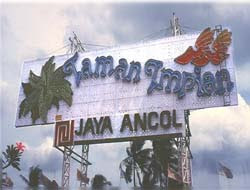
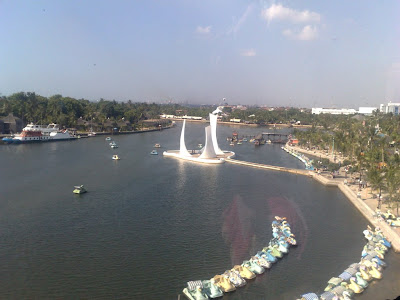
TIJA is the largest amusement park in Indonesia. Various entertainment is available in the Arena Ancol area. Hotels mi not lose anything in the area to complement the Ancol entertainment facilities in Ancol.
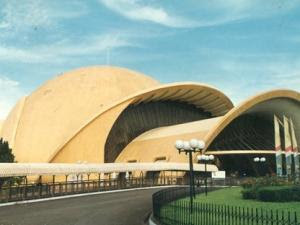



This area is a tourist destination is very famous abroad. Kuta itself in many shops, restaurants and washing and drying herself. Kuta Beach is often referred to as Sunset Beach or the sunset beach as opposed to the Sanur beach. The air field I Gusti Ngurah Rai is situated not far from Kuta.

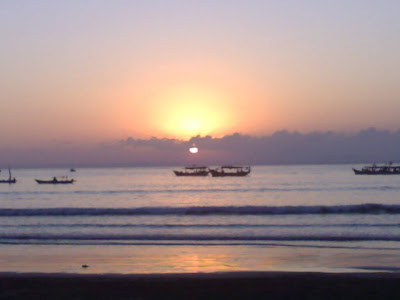
* Gently sloping beach with clear water and the distance between the relative ups and downs while allowing us to swim safely
* There are beaches with white sand and is also available beach tourism rescue
* There is a marine park with fish and fascinating marine life
Many unique event in the Pangandaran, one of which is the Festival International Kite (Pangandaran International Kite Festival) with a variety of supporting activities which we can see in every month of June or July.


Parahu Tangkuban have Dipterokarp forest hill, forest Upper Dipterokarp, Montane forest, and forest or forest Ericaceous Tangkuban Parahu gunung.Gunung is smoothed Mountain Regions which are still active.
The origins of Parahu Tangkuban legends associated with Sangkuriang, narrated in love with her mother, Dayang Sumbi.
In spite of this volatile history, approximately 200,000 villagers reside within 4 miles of the volcano. But Merapi is just one example of Javans tempting fate in the proximity of active volcanoes—it's estimated that 120 million of the island's residents live at the foot of 22 active volcanoes.
 The Papuans are one of four major cultural groups of Papua, New Guinea. The majority of the population lives in rural areas. In isolated areas there still remains a handful of the giant communal structures that previously housed the whole male population, with a circling cluster of huts for the women. The Papuan people are Melanesian people composed of at least 240 different peoples, each with its own language and culture. Sago is the staple food of the Papuan supplemented with hunting, fishing and small gardens.
The Papuans are one of four major cultural groups of Papua, New Guinea. The majority of the population lives in rural areas. In isolated areas there still remains a handful of the giant communal structures that previously housed the whole male population, with a circling cluster of huts for the women. The Papuan people are Melanesian people composed of at least 240 different peoples, each with its own language and culture. Sago is the staple food of the Papuan supplemented with hunting, fishing and small gardens.Ancestors are important, but not necessarily revered in Papuan culture. The important quality is called “imunu,” the power that pervades things, including ritual objects. Imunu is personified in the masked ceremonies. Most representations are of humans or ancestors, not plants or animals. Traditional cultural ceremonies on a large scale existed into the 1950's, but declined as Christian missionaries converted the villages.
The Christian church has been extraordinarily influential. Most Papuan people regard themselves as Christians. The largest denominations are Catholic, Evangelical Lutheran and United Church. Pantheistic beliefs are also widespread and traditional rituals are important in Papuan culture. For example, people who live in danger of crocodile attacks are likely to give crocodiles an important role in their culture, while farming communities often place greater emphasis on the weather, accordingly celebrating fertility and harvest. Placating the spirits of ancestors is a dominant theme in traditional beliefs while the fear of sorcery and witchcraft is also widespread. Most Papuans manage to create a personal theology that seamingly blends Christianity with the finer points of their traditional religion.
Papuan art forms are as diverse as they are distinctive. In a country where language varies from village to village, it can be expected that artistic expression will differ in style just as dramatically. Pottery, weapons, carvings, basketwork and musical instruments are produced by different people in different places, according to their traditional skills and beliefs. Most provinces specialize in different kinds of weaponry. Bows and arrows are traditional in several areas. Shields have a decorative and spiritual role just as important as their defensive purposes. Gope boards are believed to possess the spirits of powerful warriors or to act as guardians of the village. Before hunting or war expeditions, the spirits were called upon to advise and protect the men. Story boards are a modern version of the fragile bark carvings villagers used to make. The boards illustrate incidents of village life in raised relief.
Prambanan, named after the village, is the biggest temple complex in Java. There are 224 temples in the complex; three of them, the main temples are Brahma Temple in the north, Vishnu Temple in the south, and the biggest among the three which lies between Brahma and Vishnu temples is Shiva Temple (47 meters high).
These three ancient masterpieces of Hindu architecture are locally referred to as Prambanan Temple or Lorojonggrang Temple. One of its appeals is the wealth of sculptural detail. The well known one is on the inner wall of the balustrade, the wonderfully vital and utterly engrossing Ramayana epic.
The nearest major city is Yogyakarta, 17 kilometers away. Solo is also within easy striking distance.
Yogyakarta’s airport is just ten kilometers from Prambanan. A taxi direct to the site should cost about Rp 20,000.
There are regular buses from Yogyakarta’s Umbulharjo bus station (30 minutes), as well as a wide variety of tour agency-operated minibuses shuttling directly to Yogya’s backpacker haunts.
Route :
From Adusucipto Airport - Go to East- Route to Solo Street and 20 Kilometers, about 20 minute after Air Port
The area covers 152.600 square kilometers with residents settling along the river banks of Barito, Kapuas, Kahayan, Katingan, Mentoya, Seuyan, Kurnai, Arut, Jelai, and others. On such a vast area have population number only around 750.000 according to the census in 1971.
Organizationally, central Kalimantan is an administrative unit of a Province with the Governor is the head of the local government. The lowest administrative unit is a pembekal, the head of a Desa ( a unit of settlement ). Within this level of government there is also a customary organization. Most of them work on the dry farming and move from one place to an other within their area ( not like nomad ). Local government has the policy of opening the area for transmigration they expect from Java, Bali to develop their area.
Physically they have mongoloid characters, and also speak Malayu-Polinesian language. Their color is rather bright with yellow tone, and straight hairs. The villages of Dayak in central Kalimantan are separated far between one to another. The settlements are constructed on the bank of big and small rivers which houses are standing parallel with the flow of river or road, and an average of 100 to 500 people in a village.
Transportation between villages are still using water, very rare facilities of land connection. The shape of their houses showing the same concept as beach houses of Mentawai, Nias Sulawesi and other ethnics of Indonesia, especially the technique of high house. The house is built on 1.5 high wooden poles almost like stilt houses. In the past the house was made in big size with 50 small rooms called Betang-betang, known as Dayak Long House. Today this houses are very rare, and can only found at Northern area, near the source of the river and at the area of Ot Danum Dayak Villages.
Today the houses are more smaller which is home for on senior family plus their junior families which some times consist to 5 families. The main source of life of the Dayak is traditional farming on dry land. They clear and burn the forest and plant their main farming. Clearing a forest in traditional way indeed a hard job. To overcome this heavy job the Dayak develops Co-operation among neighbors or relative member who got assistance, naturally assist their neighbor who have assisted them before. During the month of May, June and July they cut the trees of the forest, and burn it on September. October the plant rice. The way and technique is still very simple. The men will form a row at the front walking ahead while making holes by their single wooden pole, and women with seeds at behind putting the seed in every hole. Starting from plantation until harvest they stay at the farm to watch the rice and prevent the wild animals such as monkeys, pigs, and deer to damage the plant.
During the growing the responsibility will be at every family, although during preparation of land until planting is the work of co-operation. To protect the farming from wild animal they also put trap made of bamboo with very sharp pole. The pole is connected with a long rope, and if the rope is stepped the sharp pole will glite like a bow to the direction of rope. It is often that the sharp bamboo is given a poisson, so it is actually very dangerous to human being also. They have 3 types of rice, a type that yield after 6 months, 4 month and rice called "Ketan" for ceremony.
Beside rice they also grow cassava, yam, taro, chili, durian, melon and areca. When the land is not fertile any more it is planted with rubber tree before it is lef to open a new forest. It is interesting to find that to open a new spot of land the people will see a good indication from bird and other nature's omens. If this procedure is not followed they believed that famine would unavoidable. As the source of protein they catch fish and some times catching wild pig or deer, as their hunting tool is not develop.
During ceremony or hosting important guests they cut pigs, buffalo or chicken. So these kind of meat only made available during ceremony. Side income for them is collecting rattan, taping rubber, and resine in the forest. The Dayak is very skillful in weaving by rattan, they make hats, mat, basket, and others which is the work of women. The villages of Dayak in the inner part of Kalimanatn do not yet have market, so they sell their products to the merchants that come to their villages, or some bring themselves to the cities such as Kuala Kapuas or even Banjarmasin, the capital city of South Kalimantan. Kinship system of Dayak is based on big family which in the past reside the long house both based on Patrilineal or matrilineal.
This unit of big family also as the base of working co-operation for planting rice, opening new forest and other big and heavy job. For marriage the most ideal is those generation having the same grand father or grand mother. Considered tabou is marriage between brothers, child to parents, and if their fathers are brothers (pa tri-parallel-cousin). Intimate relation between different generations such as child parent is a big offence and will be punishes by eating like pig, while walking like pig on the front of the village members. According to them this action is a "Tulah" exactly the meaning like Balinese word means offence, while can cause a big catastrophe not only for those did, but for the society. That is why the people will fine the guilty to conduct a ceremony to neutralize the danger arised from this offensive deed. Relation between youth and girls is watched by the elders, they only free to communicate at the places such as feast or ceremonies. A youth and girl can only walk together if it is watched or escorted by third person. That is also happened for a married women and married man can talk each other at the present of third person. If this is done in contradictory with above tradition it will be punishment accordingly to their traditional law. In the past parent had full authority to find their son a partner. The parent would come to the family of the girl explaining their purpose and gave what is called "hakumbang auch" literally means money for request the girl to be married with their son. The parent of the girl did not directly answer the request, yet delay it until some days, The girl's parent with their relatives then look for information about the youth, lest he is son of slave or "hantuen" (devil manifestation), or he is a descendant of good family and having good character. If the finding say that they youth is what is not expected the request will be refused and the money will be returned.
When they request is accepted a ceremony of engagement will be conducted which cost will be born by girl's family. They youth family gives gifts of cloth golden ring, fabric for shirt and others. During this ceremony, pig is the main meat, while chicken is considered not having value or undervalued. Marriage ceremony take places after 2 or 3 months. Since engagement ceremony. In case the girl has older sister still single, a gift of gong (music instrument) or chinese ceramic must be given to her to prevent danger. This thought also exist in Bali, that a younger sister or brother is not expected to merry first before his/her older brother or sister as this can caused disharmony of the married couple. There is also a marriage called "Ijari" means "run". This type of marriage come from the couple who have decided to merry the go together to the head of the village, or to an elders whose position in the village is considered influential. The head of the village or the elders then contact the related families explaining the situation. From this start the process as above. In the Dayak society both Christian and the Hindu of Kaharingan is monogamy, although their tradition does not limited a man to merry more then once, but it almost never happened, not like in Java and Lombok where a man can merry many times and having children as they wish. Divorce are normal which causes by disharmony or one of either husband or wife has another love affair.
